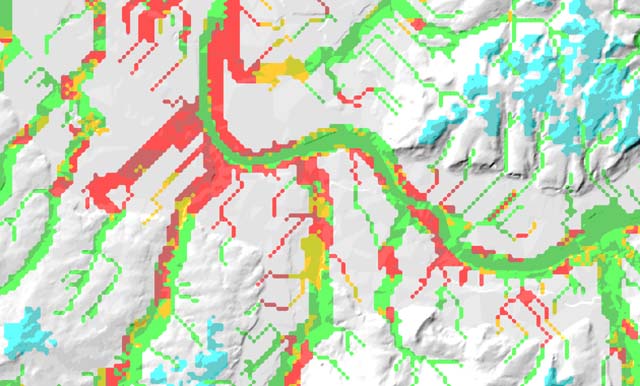Problem-area Ventilation
|
Ventilation is a dominating factor of the regional and local climate. Settlements may especially in summer nights profit of the transport of air masses with good air quality and low temperatures resulting in a positive bioclimatic effect due to the rection of pollution and the enhancement of vertical and horizontal air mass exchange. An essential precondition to obtain these positive effects are functioning ventilation paths enabling air mass transport from the cold and fresh air producing surroundings into the settlements.
Therefore it is important to maintain existing ventilation paths or if necessary to improve them to regain full functionality. In areas with a high density of building structures connection to such ventilation paths is lost in most cases resulting in a cut-off or at least disturbance of horizontal air mass exchange. To prevent negative bioclimatic effects for the concerned settlement areas the connection to the ventilation path has to be restored.
A further planning objective treated in this problem area is the risk of hazards caused by strong winds. Adequate measures may reduce damages in forestial, agricultural and settlement areas and therefore decrease financial risks as well as to improve health and living comfort in settlements.
 |
Maintain ventilation path | ||
|
Improve ventilation path | ||
| Restore connection to ventilation path | |||
| Reduce hazards caused by wind |
For a detail scene of the city of Basel corresponding to a map scale of 1:25.000 click here
For further, more detailed information see publication list or contact Dr. Dieter Scherer or Dr. Ute Fehrenbach.